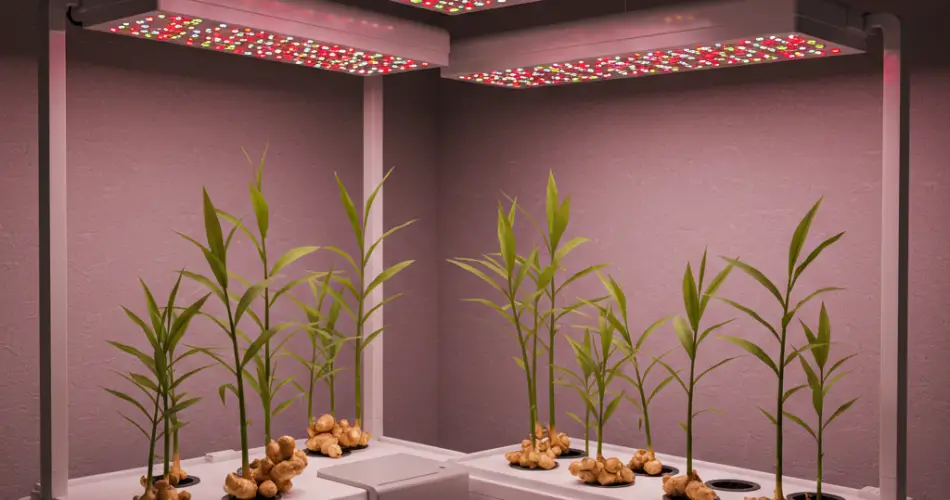Ginger is a flavorful and aromatic root used in everything from teas and stir-fries to baked goods and health tonics. The good news? You don’t need a sprawling garden to grow this tropical plant. In fact, with just a small container and a cozy corner of your house, you can grow fresh, organic ginger right at home.
Ginger (Zingiber officinale) is a low-maintenance plant that thrives in warm, humid environments and partial shade—conditions often found indoors. If you have a bit of patience and a warm space, growing ginger in your home is surprisingly simple and incredibly rewarding.
Why Grow Ginger at Home?
Growing your own ginger offers many benefits:
-
Freshness: Harvest young, tender ginger with superior flavor compared to store-bought roots.
-
Health: Control what goes into your soil—no pesticides or chemicals.
-
Sustainability: Reduce your grocery bills and carbon footprint.
-
Convenience: No need to run to the store for ginger when you can harvest it anytime.
What You’ll Need to Get Started
Before planting, gather the following essentials:
-
Ginger root (rhizome): Choose fresh, plump pieces with visible “eyes” or buds.
-
A wide, shallow container: Ginger spreads horizontally, so depth isn’t as important as surface area. A pot that’s 12 inches wide and at least 8 inches deep is ideal.
-
Well-draining soil: Use a mix of potting soil, compost, and sand or coconut coir to ensure good drainage.
-
Warm location: Ginger prefers temperatures between 70°F–90°F (21°C–32°C).
-
Indirect light: A spot with filtered sunlight, like near a window, is perfect.
Step-by-Step Guide to Growing Ginger Indoors
1. Select the Right Ginger
Look for organic ginger rhizomes at a garden center or grocery store. Avoid those treated with growth inhibitors. Choose pieces that are firm and at least 2–4 inches long with multiple eye buds (similar to potato eyes).
To prepare for planting, soak the rhizomes in warm water overnight. This helps rehydrate the ginger and encourages sprouting.
2. Prepare the Pot and Soil
Fill your container with a rich, loose potting mix. Ginger needs well-draining soil to avoid root rot. Mix in compost or worm castings for extra nutrients.
Make sure the container has drainage holes at the bottom.
3. Plant the Ginger
-
Place the ginger pieces horizontally in the soil with the buds facing upward.
-
Cover them with 1–2 inches of soil.
-
Water lightly until the soil is moist but not soaked.
Ginger doesn’t like to dry out completely but hates sitting in water. Aim for consistent, gentle moisture.
Growing Conditions and Care
Light
Ginger prefers indirect light or partial shade. Place your pot near a bright window that receives filtered sunlight, such as an east- or north-facing window. Avoid harsh direct midday sun, which can scorch the leaves.
Watering
Water regularly to keep the soil moist but not soggy. Let the top inch of soil dry out slightly between waterings. In dry climates or during winter, increase humidity around the plant with a tray of water or misting.
Feeding
Fertilize every 4–6 weeks with a balanced liquid fertilizer or compost tea. Ginger is a light feeder, but occasional feeding will support healthy growth.
Temperature and Humidity
Keep the growing area warm—ideally above 68°F (20°C). Ginger thrives in humidity, so a humidifier or misting the leaves will help if indoor air is dry.
Growth Timeline
Ginger grows slowly. Sprouts should appear in 3–5 weeks after planting, depending on temperature and humidity. Once established, the plant will produce tall, slender stalks and lush green leaves.
-
3 months: Young ginger roots (milder flavor) can be harvested carefully without uprooting the entire plant.
-
8–10 months: For mature ginger with stronger flavor, harvest when the stalks begin to yellow and die back.
How to Harvest Ginger
Gently dig around the edges of the container and pull up a section of rhizome. Leave the rest of the plant in place to continue growing.
After harvesting, you can wash and dry the root. Use it fresh, freeze it, or dry it for long-term storage.
Common Problems and Solutions
-
Yellowing leaves: Could be a sign of overwatering or nutrient deficiency. Reduce watering and feed the plant.
-
Moldy soil surface: Improve air circulation and reduce moisture. Use a fan or place in a less humid location.
-
Slow sprouting: Be patient. Ginger may take several weeks to sprout in cooler conditions.
Final Thoughts
Ginger is one of the easiest and most satisfying crops to grow indoors, even in a small corner of your home. It asks for little but gives a lot—lush foliage, fragrant presence, and a bounty of delicious, medicinal roots.
With a bit of planning, patience, and regular care, you’ll have a thriving ginger plant producing fresh rhizomes that elevate your cooking and health routines. No backyard needed—just a pot, a warm spot, and a love for growing your own food.



